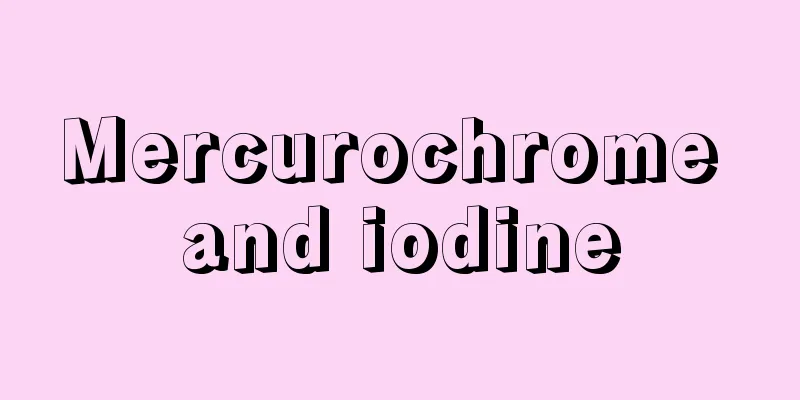Mercurochrome and iodine

|
Mercurochrome and Povidone-iodine are common medicines in people's home medicine cabinets. Many times when people's bodies are bumped or injured, they will use mercurochrome or povidone-iodine to wipe them, but people know very little about the specific effects of mercurochrome and povidone-iodine. Mercurochrome and Povidone-iodine are both disinfectants used to kill bacteria, but mercurochrome and povidone-iodine cannot be used at the same time. Everyone must pay attention to this in daily life. In daily life, bumps and bruises are inevitable, and many people will buy external medicines such as iodine tincture and mercurochrome for treatment on their own. However, patients should be aware that iodine tincture cannot be used together with mercurochrome. Povidone-iodine is an amorphous compound. We are most familiar with its disinfecting effect, which can kill fungi, protozoa and some viruses. It is often used as a bactericidal disinfectant in medicine. It can be used for pre-operative and other skin disinfection, instrument immersion disinfection and disinfection before vaginal surgery. When we have common burns, abrasions, frostbite, contusions and other external injuries, iodine tincture has a very good disinfection effect. Compared with other disinfectants, it will not cause strong irritation and pain. Moreover, the iodine tincture we use is of relatively low concentration and light color, so it is not easy to contaminate clothes! Mercurochrome, also known as mercurochrome, is an organic mercury disinfectant and preservative. After the mercury ions dissociate, they combine with proteins to kill bacteria, but it is ineffective against bacterial spores. Mercurochrome has weak bactericidal and antibacterial effects but is non-irritating, so it is often used for fresh small-area skin or mucous membrane injuries, such as abrasions and bruises. However, because it contains mercury, it can easily cause mercury poisoning when used to disinfect large wounds, so it is rarely used nowadays. If iodine tincture is used together with mercurochrome, iodine and mercuric bromine will react to produce a highly toxic substance - mercuric iodide, which has a strong irritating effect on the skin, mucous membranes and other tissues, causing redness, swelling and blistering of the skin and non-healing of wounds. If mercuric iodide enters the blood, it may also induce gingivitis and, for some patients with poor heart function, may even lead to heart failure. Once you find that the two drugs are used together, you should wipe it off immediately with alcohol cotton and seek medical attention promptly. In addition, it should be noted that long-term continuous use of mercurochrome may affect kidney function. If an allergic reaction occurs when using mercurochrome or iodine, give anti-allergic drugs and symptomatic treatment. |
<<: How to prevent allergic rhinitis
>>: Judging skin color by blood vessel color
Recommend
Is it too late to think of TCM when cancer is in the advanced stage? Recommended TCM nursing plan for confirmed lung cancer
Traditional Chinese Medicine Nursing Program for ...
Prostate cancer pathological stages development prevention prostate
Prostate cancer is a relatively serious malignant...
What are the symptoms of patients with advanced lung cancer? These symptoms of advanced lung cancer are very common
Lung cancer is a very common malignant tumor in o...
What to do if you have bloating when you wake up from sleep, 5 effective methods
It is a common phenomenon for babies to have bloa...
How are calf muscles formed
Overly thick calf muscles will affect the beauty ...
Several aspects that need attention in preventing kidney cancer
The occurrence of kidney cancer is closely relate...
What can you do if the milk turns sour
If milk has become sour, you must not drink it an...
Early symptoms of small cell lung cancer
Small cell lung cancer is also a type of lung can...
What are the methods for diagnosing lung cancer? There are 3 common diagnostic methods for lung cancer
Since the causes of lung cancer are relatively co...
What should I eat to avoid uterine cancer
Female friends need careful care. Many diseases c...
What is the function of hydroxyethyl cellulose?
There must be a lot of people who don't know ...
The corner of my eye is itchy, red and swollen with a small pimple
People nowadays live at a fast pace and overuse t...
What should I do if I always sneeze due to allergic rhinitis?
The time when seasons change is when allergic rhi...
What are the symptoms before death from advanced gallbladder cancer
Gallbladder cancer ranks first among malignant tu...
Is it okay to apply sesame oil on burns
Sesame oil is a common condiment in our lives. It...









